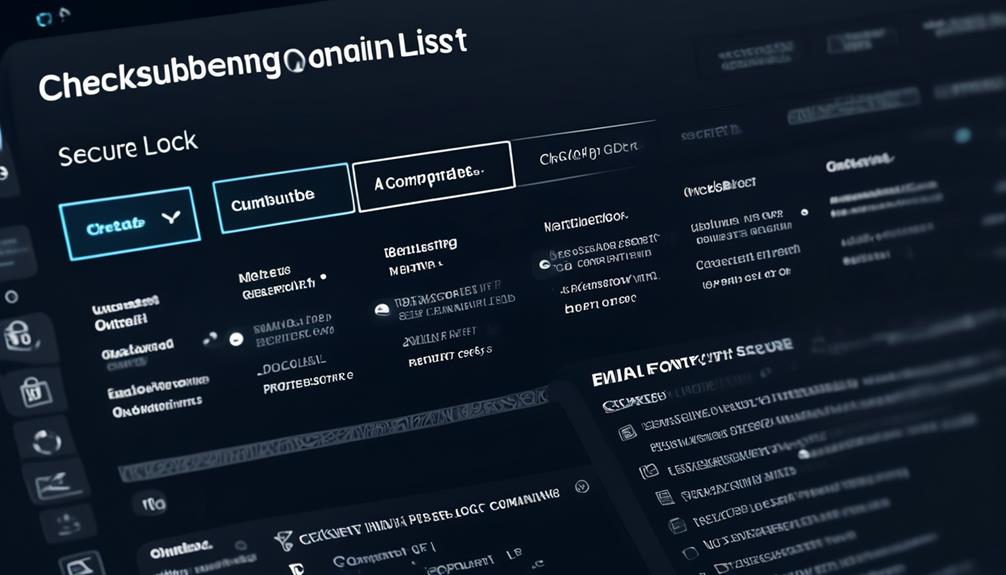To comply with GDPR in email marketing, you need to be transparent about tracking and obtain explicit consent from your recipients before using cookies or pixels. Inform your subscribers about how their data will be used and give them control over their preferences. Using clear consent banners and updating privacy policies are vital steps. If you want to guarantee you’re handling user data responsibly while fostering trust, there’s more to contemplate that can help you stay compliant and ethical.
Key Takeaways
- Obtain explicit, active consent from users before deploying cookies or tracking pixels in email campaigns.
- Clearly inform recipients about data collection methods, purposes, and their rights through transparent disclosures.
- Use GDPR-compliant tracking tools that ensure data privacy and security during email engagement monitoring.
- Regularly review and update privacy policies to reflect current tracking practices and user rights.
- Allow users to easily withdraw consent and access detailed information about their data processing.
Under the General Data Protection Regulation (GDPR), cookie consent and tracking in email marketing become essential for respecting user privacy and maintaining compliance. When you’re collecting data through email campaigns, you must prioritize data privacy by informing your recipients about how their information is used. This means being transparent about user tracking mechanisms, such as cookies or pixels, that might gather insights into their behavior, preferences, and engagement levels. GDPR emphasizes that users have the right to control their personal data, so you need to obtain clear, explicit consent before deploying any tracking tools.
Implementing proper cookie consent methods isn’t just about avoiding penalties; it’s about building trust with your audience. When you send marketing emails, you should include a straightforward consent banner or disclosure that explains what data you collect and why. For example, if you use cookies to track email opens or link clicks, you have to inform your subscribers upfront. This transparency helps users make informed decisions about their participation, reinforcing your commitment to data privacy. Remember, under GDPR, silence or pre-checked boxes aren’t compliant; consent must be active and specific.
Tracking user activity in emails can offer valuable insights to tailor your marketing efforts, but you must do so responsibly. You’re allowed to monitor engagement metrics like open rates and click-throughs, but only if your recipients have given proper consent. When you respect user privacy, you’re not only complying with GDPR but also fostering a sense of trust that encourages ongoing engagement. Be aware that any third-party tools or services you use for user tracking should also be GDPR-compliant, and you should ensure they provide adequate safeguards for data privacy.
To stay compliant, regularly review your email marketing practices and update your privacy policies to reflect current tracking technologies and consent procedures. Make sure your subscribers can easily access information about how their data is processed and how they can withdraw consent if they choose. Clear, concise communication about data privacy and user tracking helps you avoid legal issues and enhances your reputation among your audience. Additionally, understanding the Fokos platform’s approach to cookies and user consent can help you implement compliant strategies. Ultimately, respecting user privacy isn’t just about following rules; it’s about fostering a trustworthy relationship that values your subscribers’ rights and choices. By diligently managing cookie consent and user tracking, you ensure your email marketing efforts are both effective and compliant with GDPR standards.
Frequently Asked Questions
Can I Use Cookies Without Explicit User Consent Under GDPR?
No, you can’t use cookies without explicit user consent under GDPR. You must obtain clear, informed user consent before tracking or collecting personal data through cookies. This respects data privacy and guarantees compliance. Without user consent, using cookies could lead to penalties and damage your reputation. Always prioritize transparency and give users control over their data, aligning your practices with GDPR requirements for lawful data processing.
How Long Can Tracking Data Be Stored Legally?
You can store tracking data for as long as it’s necessary to fulfill its purpose, but you must set a clear retention period. Under GDPR, you’re legally required to determine and document your legal storage duration, ensuring data isn’t kept longer than needed. Once that period expires, you should securely delete or anonymize the data to comply with GDPR’s accountability and data minimization principles.
Are Third-Party Email Tracking Tools Compliant With GDPR?
Imagine you’re a knight in shining armor, but even knights must obey the law. Third-party email tracking tools can be GDPR compliant if they implement proper tracking compliance measures. They must guarantee that third-party cookies are used transparently, obtain explicit consent, and provide clear opt-outs. If these conditions are met, you can confidently use third-party tools without risking non-compliance, just like a noble knight following the code of honor.
What Are the Penalties for Non-Compliance With GDPR Cookie Rules?
If you don’t comply with GDPR cookie rules, you face hefty cookie penalties and enforcement actions. Regulatory authorities actively monitor compliance, and penalties can include hefty fines—up to 20 million euros or 4% of your annual turnover. Non-compliance could also damage your reputation and trust with customers. To avoid these issues, guarantee you follow GDPR guidelines, obtain proper cookie consent, and stay updated on compliance enforcement practices.
How Does GDPR Affect Email Marketing in Non-Eu Countries?
If you’re marketing via email internationally, GDPR influences your practices by requiring you to respect EU data protection standards for cross-border data transfers. You must guarantee your email campaigns comply with GDPR when handling personal data of EU citizens, even if you’re outside the EU. This means adopting international compliance measures, obtaining proper consent, and safeguarding data privacy to avoid penalties and build trust with recipients across borders.
Conclusion
So, after all this, it’s funny how GDPR makes you jump through hoops just to send an email. You’d think respecting user privacy would be simple, but instead, you’re left deciphering cookie rules and consent forms. Ironically, in trying to protect users, you might end up complicating your marketing. Just remember, the more you comply, the more you show you care—though it might feel like a game you’re always losing.









